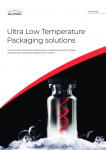Pharmsource provides contract services industry overview
providers, particularly those at the early-stage end of
development, although companies are advised to watch out for a
tougher environment ahead.
An expanding drug development pipeline has been creating a strong demand for clinical research and supplies manufacturing and packaging services, attendees at the recent Interphex trade show in Philadelphia heard in a keynote presentation by Jim Miller, president of Pharmsource. As a result, contract research organisations (CROs) and contract manufacturing organisations (CMOs) supporting preclinical and clinical development had an especially fruitful year, both generating around 20 per cent growth in revenue. In the clincial development space, the largest CROs saw the biggest gains in ground, driven in part by the pharma industry's continued reach into emerging markets such as Asia, Latin America and Eastern Europe, which favor the largest CROs with global networks. Additionally, the trend toward larger, longer Phase III trials in a bid to uncover any potential adverse events before a product reaches the market, as well as a growing demand for post-approval services to monitor a drug's performance further in "real life", is also contributing to demand for the services of large CROs who have such capacity. Of the top CROs, Kendle has witnessed the most growth in the past year, reporting over a 40 per cent gain in revenue, followed closely by Icon Clinical Research. Both Phase Forward and Parexel made gains of around 25 per cent and Pharmanet saw revenue growth of 20 per cent. Pharmaceutical Product Development, by far the highest earner of the publicly traded global CROs, saw its revenue rise 15 per cent to $1.3bn over the past year. Meanwhile, companies in the commercial manufacturing space did not fare so well, with only a 2 per cent climb in revenue over the year. "Commercial manufacturing providers are mostly the dose CMOs, and the revenue figures are skewed by the performance of Patheon and Catalent, the two largest dose manufacturers," Miller pointed out. He said that the dose CMOs were hurt by the low number of new product approvals and declining sales of existing client products. "We've also heard of some major pharma companies pulling products in-house as their declining sales creates internal capacity." At the same time, small molecule active pharmaceutical ingredient (API) manufacturers have been hurt by low approvals, overcapacity and Asian competition, added Miller. Players in the API manufacturing arena as a whole saw an overall revenue gain of 10 per cent, although the small molecule API manufacturers saw only a 1 per cent rise. However, Miller said that while many commercial scale chemical API and dose CMOs "did poorly" in 2007, their development counterparts "did quite well," with a 20 per cent or higher revenue growth being typical throughout the industry for companies doing formulation, process development and clinical trials materials (CTM) manufacturing. As a subset within this setion of the industry, contract biomanufacturers have continued to display a strong business performance over the past year. But, looking ahead, Miller warned that the situation may not remain, as he pointed out some areas areas of concern in this space. Firstly, "a lot of companies have jumped into parenteral formulation and CTM manufacturing in the past two years with more than six new entrants according to our count," said Miller. "There was a dearth of parenteral development and CTM manufacturing for a few years as biologics development ramped up, but we may be headed for an overcapacity problem there." Moreover, while big pharma is getting rid of old small molecule capacity, it is busily investing heavily in biologics capacity, including cell culture, vaccine production and parenteral fill/finish, he added. According to Miller, in the biologics space, capital expenditures by big pharma firms have grown in the past three years, "even while they have been making announcements about more outsourcing." Meanwhile, as a situation of overcapacity creeps forward, there are also indications of tougher market conditions ahead, including more price competition. "One company in particular is reported to be very aggressive on price as they try to improve capacity utilisation," Miller said.













